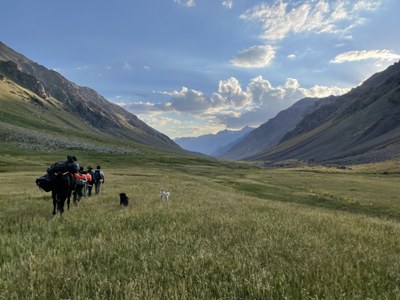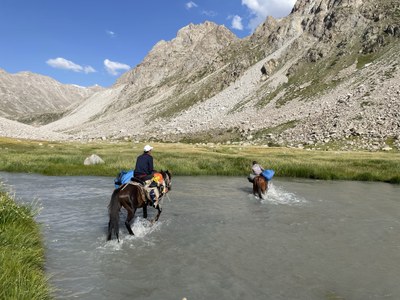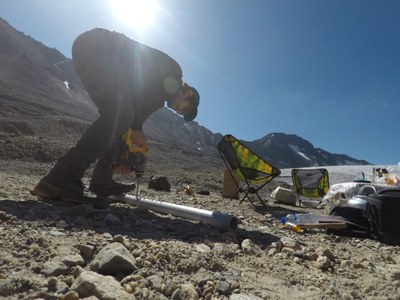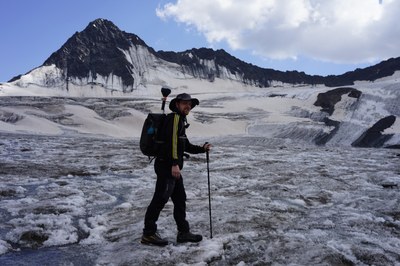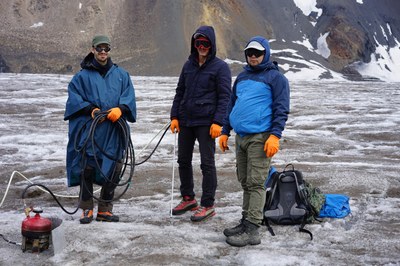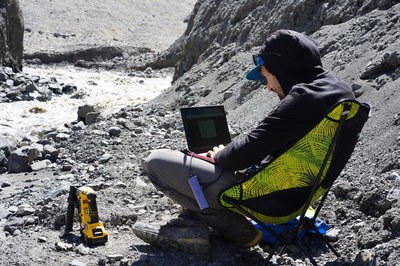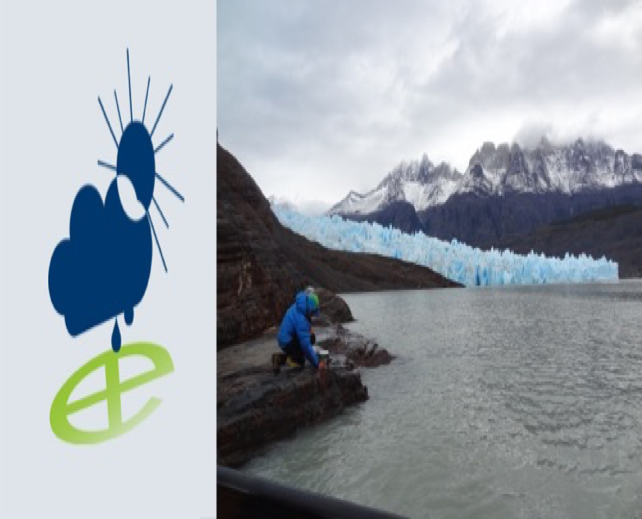Expedition Report:
CLIMWATER Project - Green Central Asia Program
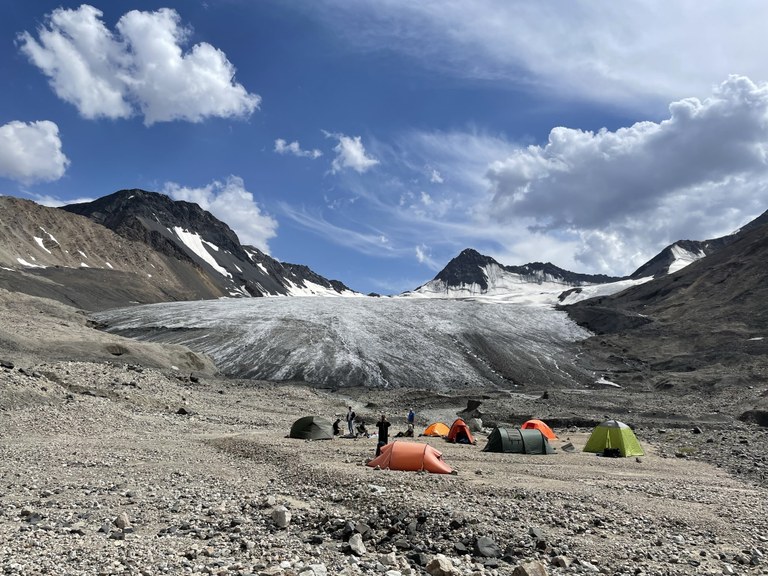
Overview
Duration: 2 weeks in July 2023
Funded by: German Federal Ministry of Education and Research (BMBF) and Ministry of Higher Education, Science and Innovation of the Republic of Uzbekistan
Involved Institutions:
-
Humboldt University Berlin: Climate Research Laboratory of the Geographical Institute
-
Helmholtz Centre Potsdam GFZ (German Research Centre for Geosciences)
-
Helmholtz Centre UFZ (Centre for Environmental Research)
-
Tashkent Institute of Irrigation and Agricultural Mechanization Engineers (TIIAME)
-
National Research University (NRU)
-
National University of Uzbekistan
Introduction
The CLIMWATER Project, part of the Green Central Asia Program, embarked on a two-week expedition with the collaboration of various German and Uzbeki institutions. The expedition comprised two primary components: the Young Scientist School, held at TIIAME in Tashkent, and the Glacier Expedition to the Pakhtakor Glacier, Uzbekistan’s largest glacier, to insightful collect data in the field.
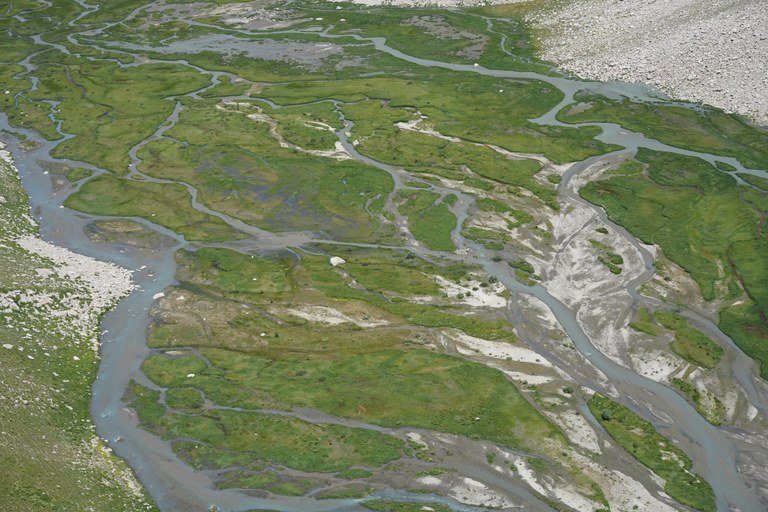
Young Scientist School
The Young Scientist School spanned three enriching days, providing participants with a comprehensive understanding of climate modeling and hydrological knowledge in the Central Asian region. Over three days, the Climate Research Laboratory of the Humboldt University conducted two workshop sessions.
The theoretical climate modeling session provided participants with a deep understanding of climate modeling methodologies and tools. Topics covered included data collection, model development, and the evaluation of climate models, with an emphasis on their regional implications for Central Asia.
An interactive workshop on MATILDA was a highlight of the Young Scientist School. Participants learned to operate MATILDA effectively and use it to model and analyze Central Asia's water resources in glacierized catchments. This hands-on experience equipped young scientists with practical skills for their future careers.
Glacier Expedition
Location: 42°09'22.1"N 71°09'23.0"E, elevation: 3480 m a.s.l.
The Glacier Expedition took place at the Pakhtakor Glacier, situated in the Pskem River basin of Central Asia. The glacier is situated in the eastern part of Uzbekistan, very close to the borders of Kyrgyzstan and Kazakhstan. This remote and relatively inaccessible glacier had not been the subject of fieldwork since the collapse of the Soviet Union.
The primary objective of the Glacier Expedition was to determine the mass balance of the Pakhtakor Glacier and measure its discharge into the Pskem River. This data would contribute to a deeper understanding of the region’s hydrology and its response to climate change.
To achieve this goal, the research team employed a combination of advanced techniques and measurements:
-
Drilling of Ablation Stakes: Ablation stakes were drilled into the glacier to monitor ice melt and accumulation, providing crucial data for mass balance calculations.
-
Tracer Measurements: Tracers were utilized to track the discharge of meltwater from the glacier at various times throughout the day, enabling a comprehensive understanding of the diurnal variations in meltwater flow.
-
Automatic Weather Station: An automatic weather station was installed to continuously monitor meteorological conditions, such as temperature, Relative humidity, Atmospheric pressure, precipitation, and wind speed/direction.
-
Gauging Station: A gauging station was set up to measure the river discharge, helping to quantify the glacier's contribution to the Pskem River’s water regime.
-
Differential GPS Measurements: GPS measurements were gathered to establish a baseline dataset for future comparisons, with a particular focus on monitoring changes in the glacier's outline and geographical features in the coming years.
-
Collection of Snow and Ice Samples: Samples of snow and ice were collected for subsequent isotope analysis, enabling insights into the sources and history of the glacier's ice.
Due to its remote location, the Glacier Expedition was a challenging but rewarding endeavor, as it allowed the team to gather valuable insights into the glacier and its characteristics. The data collected serves as a baseline and is invaluable for ongoing research into Central Asia's changing climate and hydrological systems.
The CLIMWATER Project’s expedition represented a remarkable collaboration between multinational research institutions and a valuable contribution to the broader Green Central Asia Program. It demonstrates the dedication of the scientific community in advancing our understanding of this critical region.
